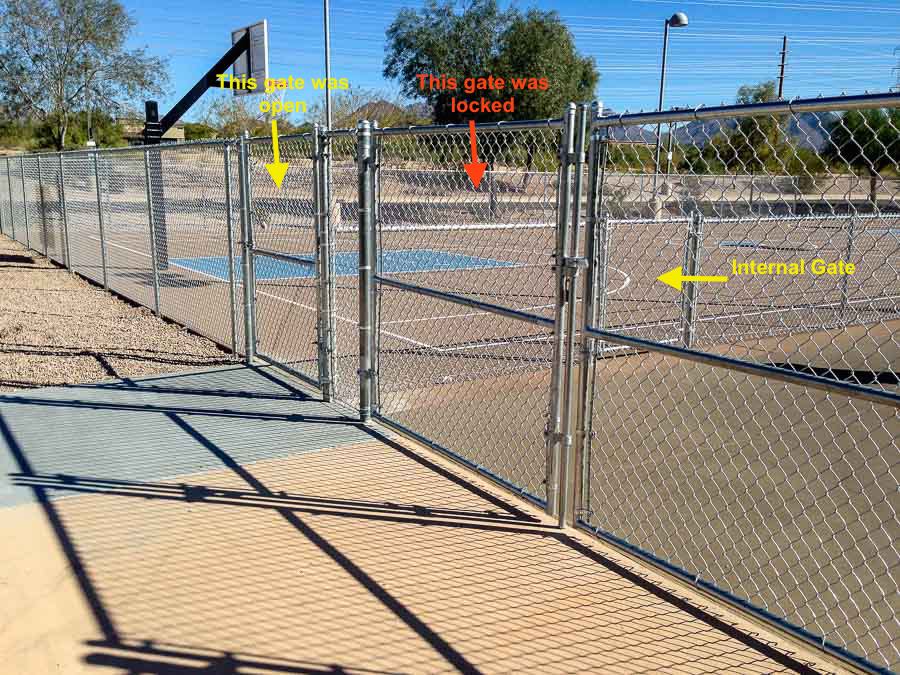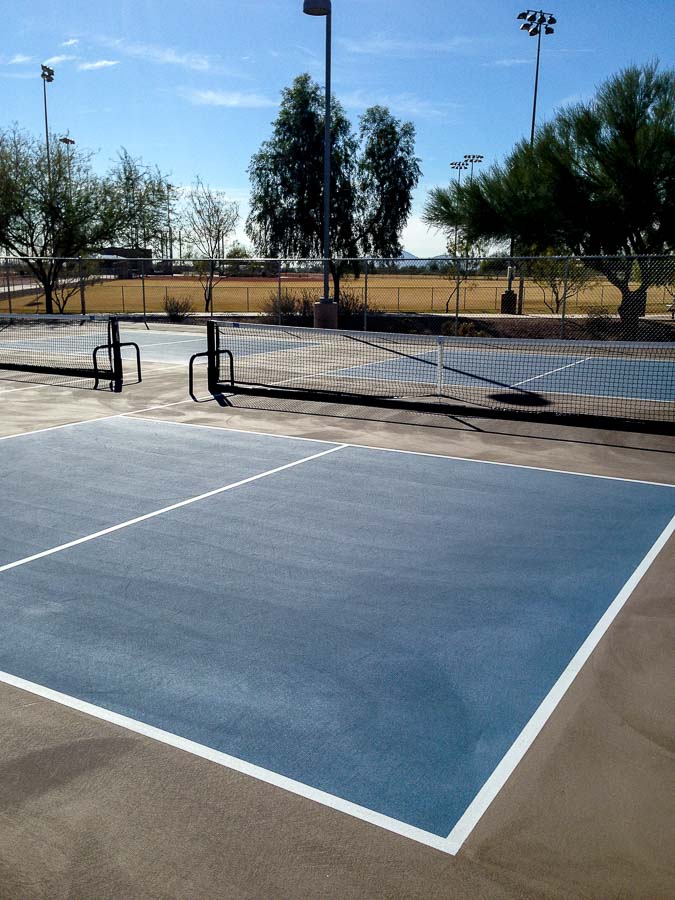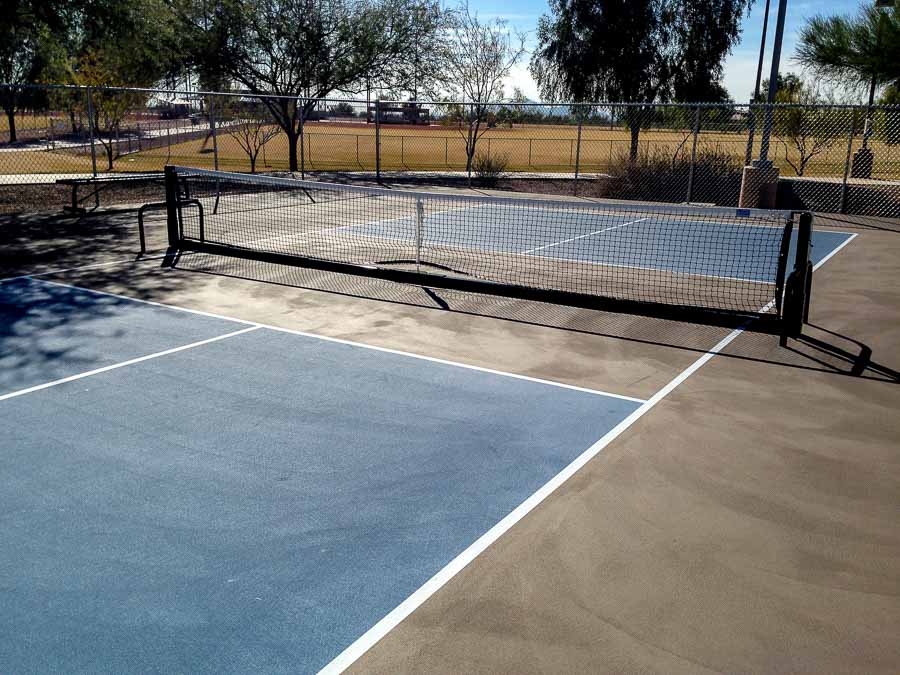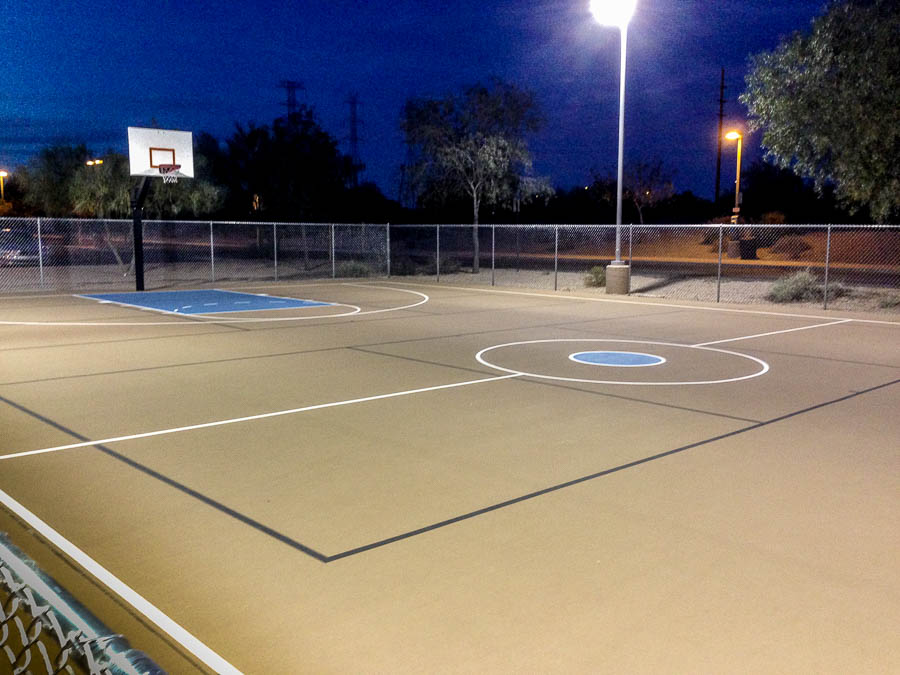I finally made it to Thompson Peak Park in Scottsdale to look at the new pickleball courts and I am posting an introduction of sorts for those who want to know more about the facility.
Thompson Peak Park
20199 N. 78th Pl.
Scottsdale, AZ 85255
Here is a link to a Map showing the park location.
This is the link for the Thompson Peak Park Meetup group which enables players to see who intends to be at the park at certain dates, times, etc. and which also provides news and updates about the park.
This is the link for the Calendar explaining which groups (beginner, intermediate, advanced, etc.) meet on which days and at what times.
https://www.meetup.com/Scottsdale-Thompson-Peak-Pickleball/events/
There are two gates available when walking from the parking area to the basketball court and pickleball court areas. When I arrived, the gate leading directly to the pickleball courts was locked, but the basketball court gate was open and a secondary internal gate then allowed entrance to the pickleball playing area.

As you can see below, the courts are two-toned which I think makes it a bit easier to define the kitchen area during certain aspects of play. The paint patterns seem a bit more exaggerated in the photos than I remember, but I thought the courts were quite playable and the paint should not be a distraction.

Here is another view.

Note that the perimeter fence is not as high as most other venues and there may be some ball chasing necessary for players like me who, once in a while, tend to miss their overhead smash! I can sometimes get them over the highest fences anyway!!

A shorter fence separated the pickleball courts from the basketball area which has lines for three additional pickleball courts for those who have their own nets.

The black lines are for the pickleball court. I have drawn a red line on the picture to indicate approximately where the net would be.

Below is a picture of the middle pickleball court marked on the basketball area.

I returned to the park one evening to assess the lighting. The courts were well lit except the northernmost dedicated pickleball court which had a light out and was dark. The other two courts were fine. The basketball area, lined for three courts, was very well lit (see picture below).

I also wanted to check out the bathroom situation. There are bathrooms and they were open at 6:45PM so my assumption is they are open all day. It is a bit of a walk as they are located between the baseball fields to the south.
There are water fountains nearby…

and benches inside the pickleball court fence.

The courts are oriented east-to-west which may prove problematic when the sun is at certain angles. All-in-all though, I think Thompson Peak Park would be a very good place to play.